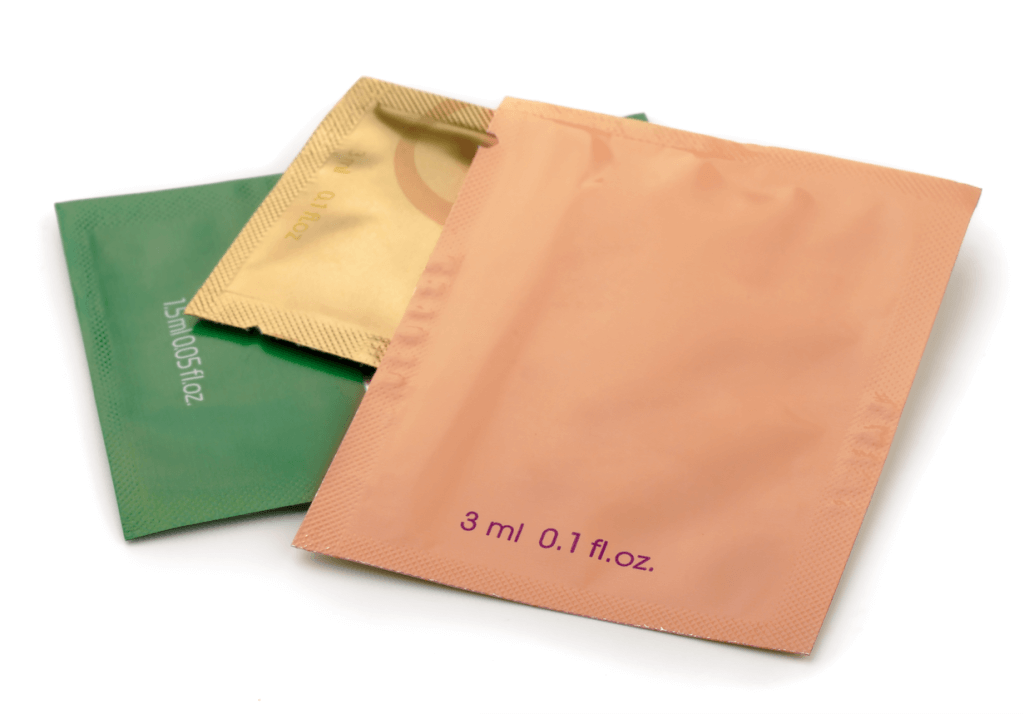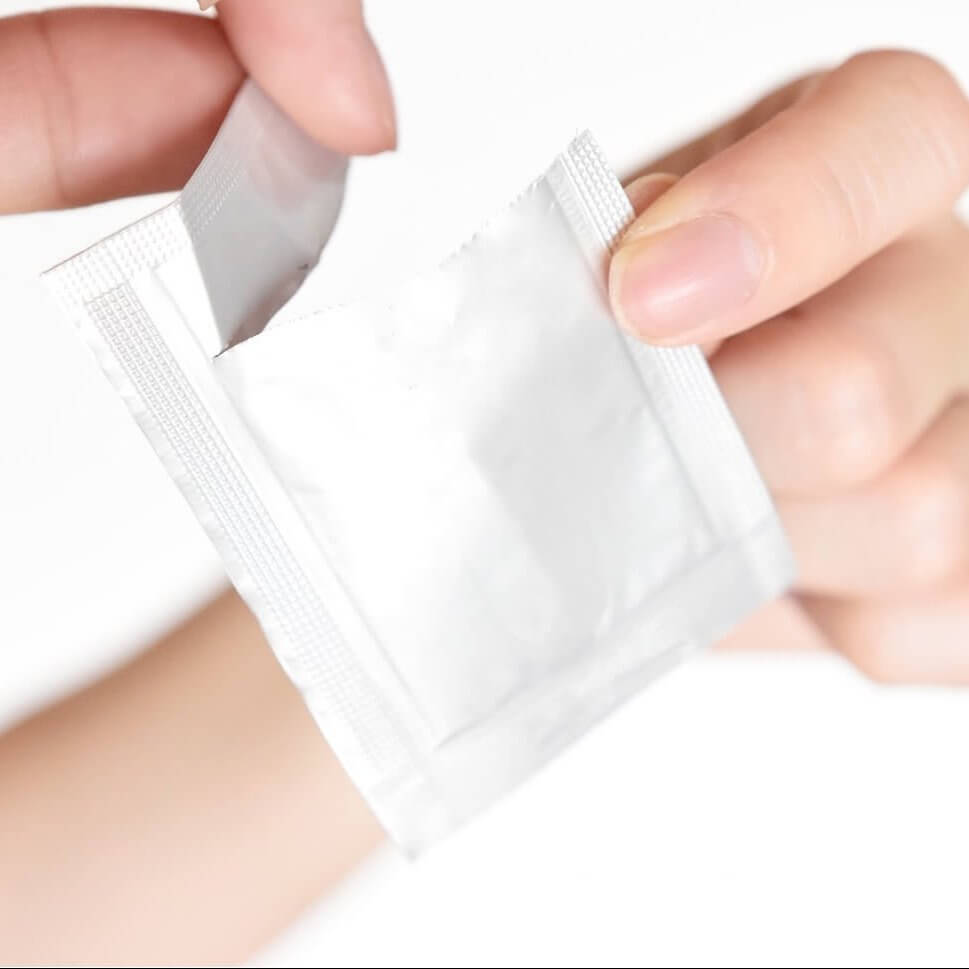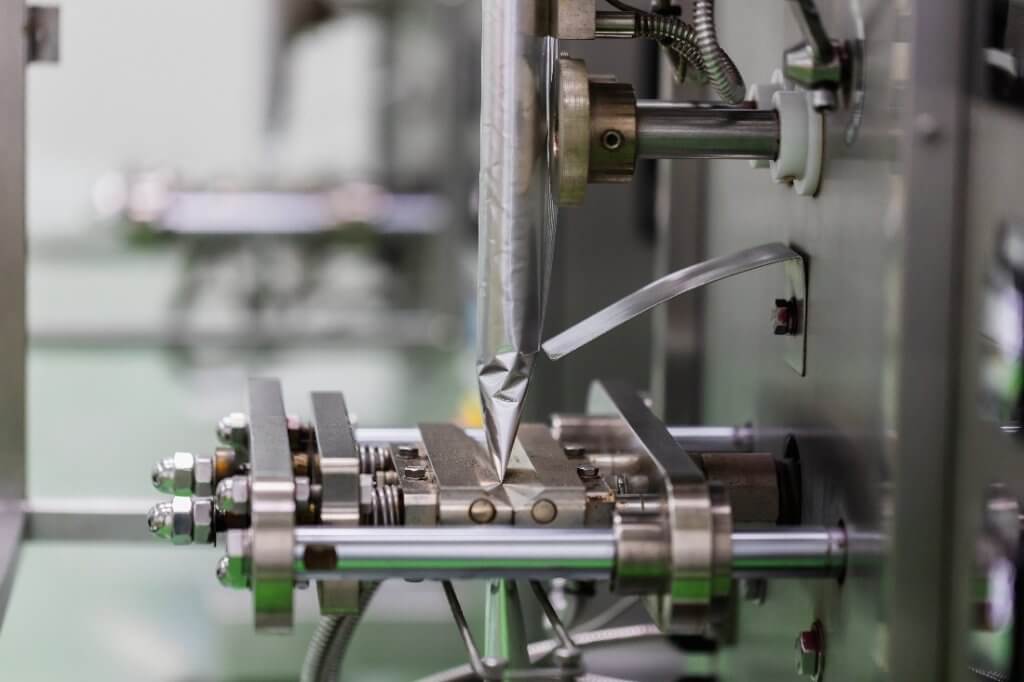Cosmetic brands often use sachet packaging for their products to make the first impressions on potential customers. Whether it’s a luxurious moisturizer, a revitalizing serum, or a radiant foundation, consumers often seek assurance before committing to a full-sized product. In this blog, we explore the benefits, functionality, and behind-the-scenes manufacturing process of sachet packaging.

Sachet Definition: What is Cosmetic Sample Sachet Packaging?
Sachet packaging, often referred to simply as sachets, is small, single-use packaging containing a small amount of a product for consumers to test products. Typically, cosmetic sachet packaging is made from various flexible plastic films such as polyethylene, nylon, and aluminum laminated together.
Sachet Benefits: What are the benefits of sachet packaging for cosmetic brands?
Picture this: a sachet filled with the promise of flawless skin, luscious locks, or captivating scents. These small yet mighty packets offer a tangible connection between the consumer and the product. According to a Cosmetics Business article, 75% of consumers said they were more likely to buy from a new brand after they sampled products. Whether tucked inside magazines, distributed at beauty counters, or included as complimentary gifts with purchases, cosmetic sample sachets serve as doorways to your brand.
“75% of consumers said they were more likely to buy from a new brand after they sampled products” – Cosmetics Business
Market Accessibility and Expansion with Sample Packaging
Sachets provide a low-risk entry point for consumers who may hesitate to invest in full-sized products, thereby democratizing access to beauty and skincare solutions. This accessibility fosters inclusivity and diversity within the beauty industry, ensuring all individuals can explore and enjoy a wide range of products tailored to their unique needs.
Sustainable Packaging Option for Sample Packaging
As environmental awareness increases, the issue of packaging sustainability has come to the forefront. Fortunately, cosmetic sample sachets offer a sustainable alternative to traditional sample packaging. With innovations coming out from packaging manufacturers, there are solutions, including ZACROS’s NIf™ series, to products that previously could not be packaged in a sachet format. Sachets reduce the overall environmental footprint associated with packaging production, transportation, and disposal—a win-win for consumers and the planet when changing from glass jars and bottles.

Sachet Functionality: Sachet Packaging Functionality Matters
Functionality matters like any other packaging, especially cosmetics, because it directly impacts consumer experience, product performance, and brand reputation. Sachet packaging is relatively small, so liquid products will likely sustain most external damages. However, we recommend performing a tensile test (determine the seal strength of a package) and a leak test (determine the integrity of a package to ensure that they are free from leaks) to confirm the packaging performance. On top of that, the chemical ingredients of cosmetics can interact with the packaging. With that in mind, a chemical compatibility test becomes critical. By understanding sachet functionality, brands can effectively meet consumers’ evolving needs and expectations while diving success in the competitive cosmetics market.
Sachet Manufacturing: How is Cosmetic Sachet Packaging Packaged?
Sachet packaging involves the lamination of multiple layers of plastic films. Once films are laminated, specialized equipment is utilized to produce sachets. Form-fill-seal (FFS) machines are common equipment used to produce sample sachets. This equipment produces sachets from roll stock films, fills them with a product, and seals them in one continuous process. The FFS machine can handle various types of packaging and different sizes and shapes.

Other common equipment is multi-lane sachet machines. These machines feature multiple forming, filling, and sealing stations arranged in parallel lanes, allowing for high-speed production of sachets. The production yield varies depending on how films are constructed and printed. So, make sure to check your suppliers to optimize sachet packaging production.
Conclusion
In conclusion, the importance of cosmetic sachet packaging extends far beyond its modest appearance. These small but significant packaging serve as catalysts for enhanced consumer experiences, market accessibility, product innovation, and sustainability within the cosmetics industry. As brands continue to embrace the versatility and potential of sachet packaging, they pave the way for a more inclusive, innovative, and sustainable beauty landscape—one sachet at a time. ZACROS provides glass-like performance materials for sachet packaging.